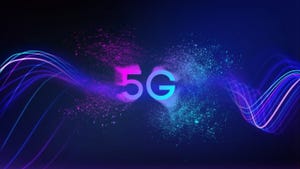3G mobile internet is "fake", says UQ president3G mobile internet is "fake", says UQ president
Japan may be home to a high amount of cellular internet users - 87 per cent of the country's 106 cellphone users go online - but that does not faze Takeshi Tanaka, president of UQ Communications, which is gearing up to launch commercial mobile WiMAX services on 1st July 2009.
Japan may be home to a high amount of cellular internet users – 87 per cent of the country’s 106 cellphone users go online – but that does not faze Takeshi Tanaka, president of UQ Communications, which is gearing up to launch commercial mobile WiMAX services on July 1, 2009.
“People are beginning to think that cellular internet is fake,” he says. “The browser is limited, the content and performance are limited, and so are the screen sizes. This is our opportunity to differentiate from the 3G style.”
Speaking at the WiMAX Forum Congress Asia event held in Singapore, Tanaka also criticised the high early termination charges levied by mobile operators on customers wishing to exit their two-year 3G contracts.
“People are beginning to see 3G operators as the bad guys,” adds Tanaka, saying that UQ, backed by KDDI and Intel, will charge a simple flat-rate monthly charge with no long-term contracts. And for good measure, UQ will start to bundle in free wifi access for UQ WiMAX customers before the end of this year.
According to Tanaka, UQ has been achieving up to 16Mbps on the downlink and up to 3.9Mbps on the uplink since free trials of the service began in February 2009. The trials are taking place in Tokyo (all 23 wards), Yokohama and Kawasaki using some 600 Samsung base stations, which are compliant to WiMAX Forum Wave-2 Phase-2 specifications. Wave-2 Phase-2 supports various additional features compared with Wave-2 Phase-1, such as QoS for real-time and near real-time video, multicast broadcast services, and IPv6. Moreover, UQ is the first major mobile WiMAX operator to use FFR (fractional frequency reuse), which, says UQ, can improve overall spectrum efficiency by 85 per cent compared with a typical ‘3-frequency’ operation.
By the end of June 2009, UQ aims to extend WiMAX coverage to Nagoya and Osaka, taking the number of deployed base stations up to 1,600. Antennas will also be located in 44 railway stations in metropolitan areas, on the Yamanote line and other lines operated by East Japan Railway (a UQ investor).
As of 31 March 2010 (the end of UQ’s fiscal year 2009) the operator says it will have deployed 4,000 WiMAX base stations and have around 300,000 subscribers. UQ is rolling out WiMAX aggressively to achieve more than 90 percent population coverage across Japan by the end of FY 2012. By that time, UQ says it will have 1,161 cities covered through 38,000 base stations, which includes 19,000 indoor base stations, more commonly known as femtocells.
Tanaka believes extensive coverage is necessary if UQ WIMAX is to become a mass market service. “WiMAX will win against 3G if we have the coverage,” he says. “To compete with LTE, however, we will need 802.16m [a faster upgrade to 802.16e] and we’re making great efforts on 802.16m standardisation.”
The need for 802.16m before LTE arrives is not a view shared by Ali Tabassi, SVP of global ecosystem & standards at US WiMAX operator Clearwire. “802.16e can beat the pants off LTE without 802.16m,” he said in his address, which prompted a cheer from some of the Congress Asia delegates.
About the Author
You May Also Like










.png?width=300&auto=webp&quality=80&disable=upscale)


_1.jpg?width=300&auto=webp&quality=80&disable=upscale)